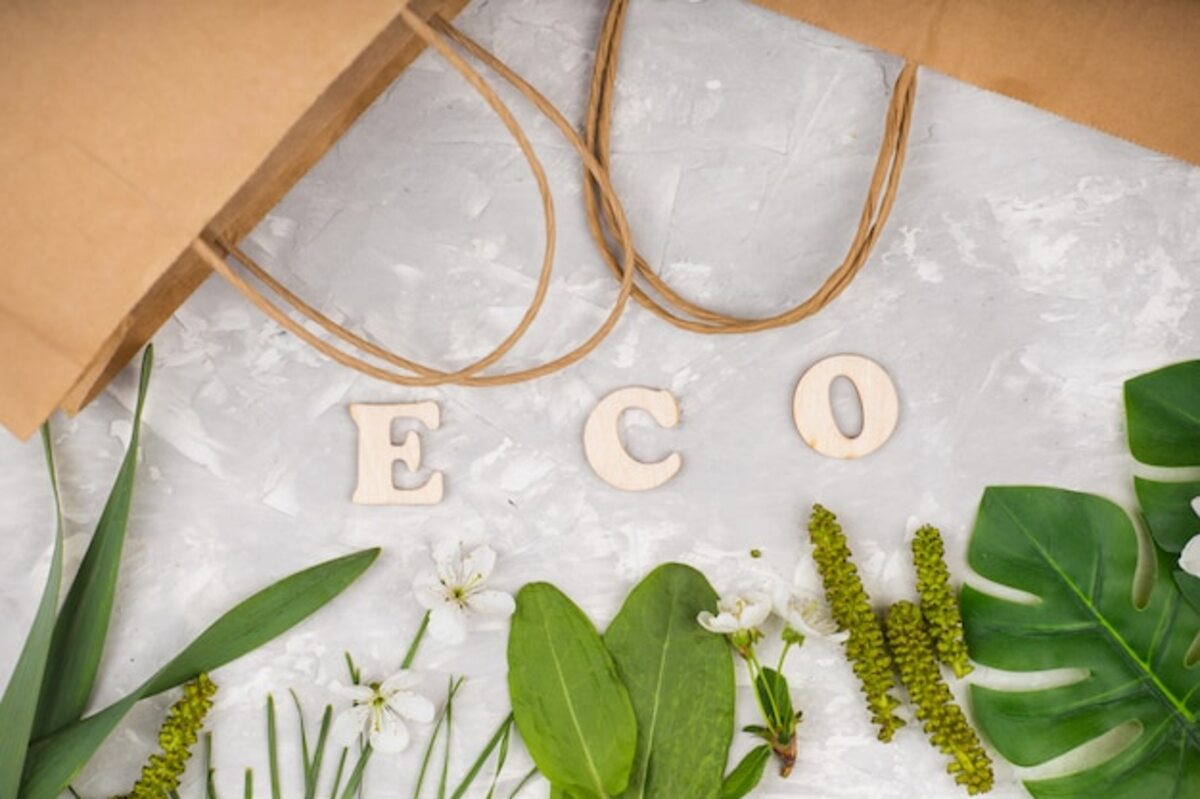Optimize your home purchases with a sustainable approach.

Optimize your home purchases with a sustainable approach. In a world where responsible consumption is becoming increasingly crucial, it is essential to adopt practices that benefit both our home and the planet. This article will guide you in the purchasing process so you can select products that are not only functional and aesthetically pleasing but also environmentally friendly. Learn to make smart choices that reduce your ecological footprint while saving money on your home purchases.
The importance of sustainability in household purchases
Sustainability in home purchases is essential for creating an environment that is not only welcoming and functional but also eco-friendly. By choosing sustainable products, we are contributing to the conservation of natural resources and the well-being of the planet. This means selecting items made from recyclable or biodegradable materials, as well as those sourced from responsible suppliers. Through conscious decisions, we can minimize the environmental impact of our daily purchases and promote a lifestyle that is more harmonious with our surroundings.
Moreover, adopting a sustainable approach to our purchases not only benefits the environment but can also lead to long-term economic savings. Sustainable products are often more durable and efficient in use, resulting in lower costs for repairs and frequent replacements. By investing in goods that are designed to last, we are ensuring that each purchase is a smart investment. Therefore, by prioritizing sustainability, we are building a healthier home for ourselves and future generations.
2. Identifying eco-friendly products: what to look for?
When identifying eco-friendly products, it is essential to pay attention to certain aspects that ensure their sustainability. First, check for environmental certifications such as the "Ecológico," "Orgánico," or "Bajo en emisiones" seal. These labels indicate that the product has been manufactured under standards that minimize environmental impact, from the sourcing of raw materials to its distribution. Additionally, consider the ingredients and materials used: choosing products made with natural and biodegradable components not only reduces the use of harmful chemicals but also ensures less pollution throughout their life cycle.
Another key aspect is the durability of the product. Investing in items that are designed to last not only reduces the frequency of purchases but also helps decrease the waste generated. Look for brands that offer extended warranties and available spare parts; this demonstrates a commitment to sustainability and allows you to repair rather than replace. Finally, assess the packaging: choosing products with recyclable or reusable containers can make a significant difference in your ecological footprint. Adopting these criteria when making your purchases will help you build a more sustainable home without compromising quality or style.
3. Local purchases: supporting the economy and the environment
Local shopping is an effective way to support both your community's economy and the environment. By purchasing products from nearby producers and merchants, you not only contribute to local economic sustainability but also reduce carbon emissions associated with transporting goods. Every time you choose a local market or neighborhood store over large commercial chains, you are investing in the well-being of your community and fostering job creation. This creates a positive cycle where investments remain within the locality, strengthening social ties and promoting a sense of belonging.
Additionally, local products tend to be fresher and less processed, which means their ecological footprint is generally smaller. Many local producers use sustainable farming methods that preserve the environment and promote biodiversity. By choosing these products, you are not only opting for healthier options for yourself and your family, but you are also supporting responsible farming practices that benefit the ecosystem. Investing in local purchases is a simple yet powerful way to make a significant difference in your home and on the planet.
4. How to plan a sustainable shopping list
When planning a sustainable shopping list, the first step is to assess what you really need. Before leaving home or clicking on your favorite online store, check your current supplies and think about how you can reduce waste. An effective practice is to organize your items by categories, such as fresh food, cleaning supplies, and utensils. This will not only help you identify what is missing but also make it easier to choose eco-friendly options when purchasing each item. Opting for local and seasonal products, as well as those with less packaging, can make a significant difference in the environmental impact of your purchases.
Additionally, consider setting a budget that prioritizes sustainable products. It is often thought that choosing eco-friendly alternatives can be more expensive; however, investing in quality and long-term durability can be more economical. Include in your list brands that use recycled materials or have recognized environmental certifications. You can also incorporate versatile products that serve multiple functions to avoid unnecessary purchases. At the end of the day, a well-planned list not only optimizes your time and money but also contributes to a more conscious and responsible lifestyle towards the environment.
5. Strategies to reduce waste when shopping
To reduce waste when shopping, it is essential to plan ahead. Before going out to shop, create a detailed list of what you really need. This will help you avoid impulse purchases and focus on products that align with your sustainable approach. Additionally, consider checking your closets and pantries before making a new purchase; often, we can find forgotten items that are still useful. By limiting unnecessary purchases, you not only reduce waste but also optimize your financial resources.
Another effective strategy is to choose bulk products or those with recyclable packaging. Buying in bulk can be an excellent way to reduce the amount of disposable packaging you generate while also saving money compared to packaged versions. Make sure to bring your own reusable containers when you go to stores that offer this option. It is also advisable to learn about local brands and products that use sustainable practices in their production and distribution; this way, you contribute to the local economy while reducing your carbon footprint associated with the transportation of goods.
6. Reusable alternatives to disposable products
Reusable alternatives are one of the most effective ways to reduce the amount of waste we generate in our homes. Products like cloth bags, stainless steel bottles, and glass containers are durable options that not only minimize the use of disposable plastics but are also often more economical in the long run. By opting for these products, you are not only making a conscious choice for the environment but also promoting a more sustainable and healthy lifestyle for you and your family. Furthermore, many times these items are designed with attractive styles, allowing you to maintain the aesthetics of your home without compromising ecological principles.
The transition to a more sustainable home may seem overwhelming at first, but starting by replacing disposable products with reusable alternatives is a simple and meaningful step. For example, consider using cloth napkins instead of disposable ones or reusable containers instead of plastic wraps. Every small change counts and adds up to a greater positive impact. In this way, you not only contribute to reducing plastic in our oceans and landfills, but you also inspire others to follow your example. Ultimately, making conscious choices in your home can transform your daily habits towards a more sustainable future.
7. The role of environmental certifications in your purchasing decisions
Environmental certifications play a fundamental role in responsible and sustainable purchasing decisions. These labels indicate that a product has been evaluated and meets certain ecological standards, allowing consumers to make more informed choices. By opting for products with certifications like the FSC Seal, Energy Star, or EcoLabel, you are not only choosing items that minimize their environmental impact but also supporting companies committed to sustainable practices. This can translate into higher quality and durability of products, which is a long-term investment for your home.
Additionally, environmental certifications promote transparency in the market and empower consumers. By understanding what these labels mean and what their evaluation criteria are, you can demand responsibility and ethics from brands. The proliferation of these certifications has been key in incentivizing companies to improve their production processes and reduce their ecological footprint. Therefore, every time you choose a certified product, you not only benefit your home; you also contribute to a positive change in the industry and the well-being of the planet. Adopting this practice in your daily purchases can be the first step towards a more conscious and sustainable lifestyle.
8. Digital tools to optimize your sustainable shopping
Digital tools have become essential allies for those seeking to adopt a more sustainable lifestyle. Applications and online platforms provide the opportunity to research and compare products before making a purchase, facilitating access to information about the sustainability of each option. For example, some applications allow users to scan barcodes to obtain data about the environmental impact of the product, its ingredients, and the brand's social commitment. By using these tools, you can ensure that your purchases are not only practical and appealing but also aligned with your ecological values.
Additionally, social media and blogs dedicated to sustainability are excellent resources for discovering new brands and products that prioritize environmental care. Through reviews and recommendations shared by other conscious consumers, you can learn about lesser-known alternatives that could be perfect for your home. Furthermore, many online stores offer specific filters that allow you to exclusively search for sustainable or ethically produced products. This way, optimizing your home purchases becomes a simpler and more rewarding process by having the necessary information to make informed decisions that benefit both your well-being and that of the planet.



